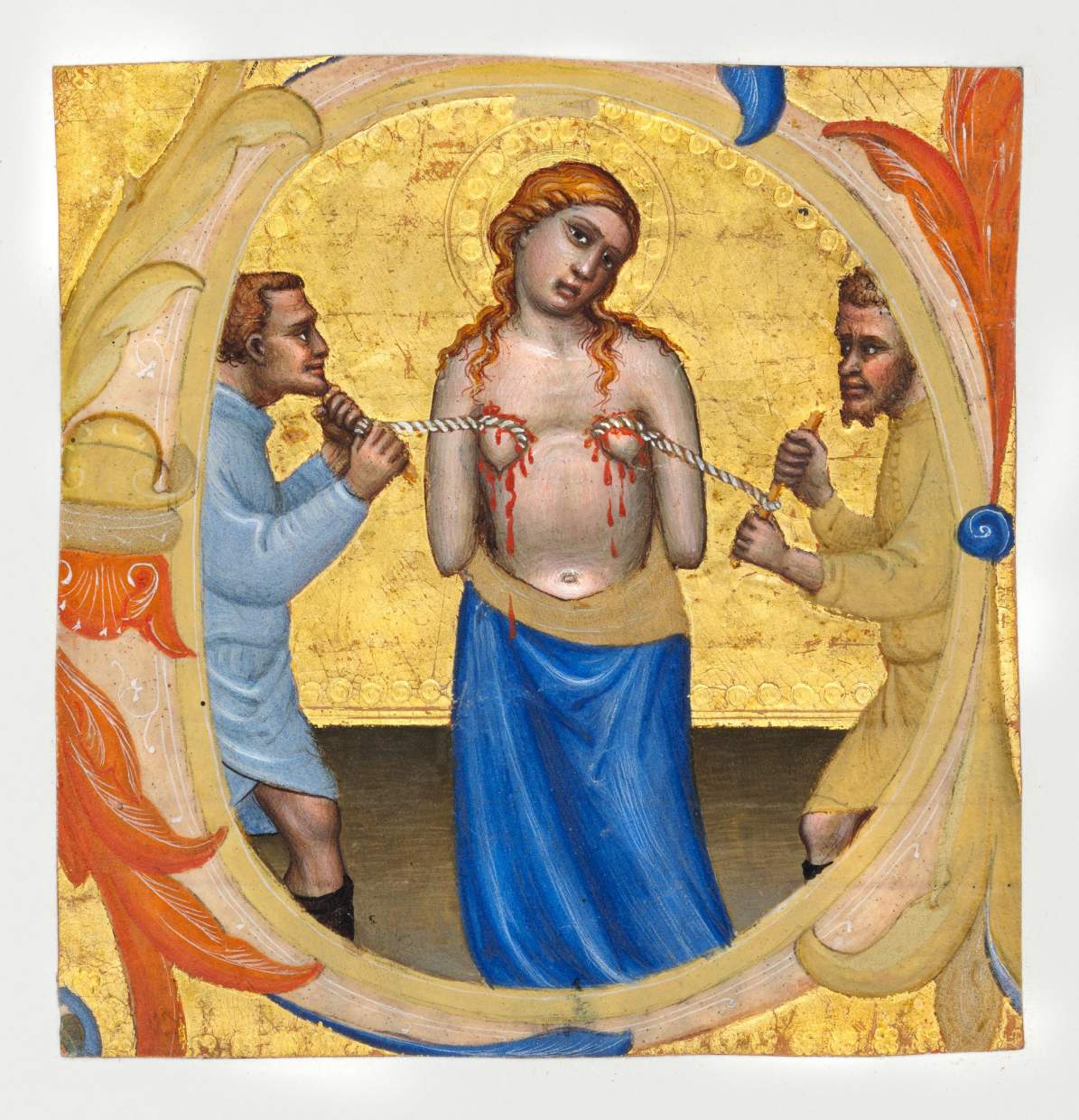

Martyrdom of Sain’Agatha, cutting of an Antiphonary leaf with a historiated Initial D, illuminated by the Master of the Codex Rossiano (Fra Gregorio Mutii da Montalcino ?). Tempera, burnished gold and ink on vellum.
Italy, Siena, c. 1380-95
Cutting: c. 125 × 115 mm. Musical notation in brown ink on four lines staves (rastrum c. 35 mm). – Margins of the letter’s body trimmed, gold slightly rubbed, else in excellent condition.
Hide caption

In the bowl of this elegant initial D, Saint Agatha is cruelly tortured by two henchmen, who are busy tearing off the young woman’s breasts. The grim violence of Saint Agatha’s martyrdom contrasts strikingly with the dignified manner of the female Saint. Despite the inflicted pain, the saint’s facial expression indicates that she has already entered a heavenly sphere of peace and serenity.
The colour scheme of the scene also contributes to the grappling narrative: a very focused palette, based solely on blue and beige, enhances the visibility of the abundant blood that occupies the centre of the composition. The red droplets stand out like little rubies against the rose skin of the saint which is portrayed against a warm golden background decorated with fine geometrical patterns.
Saint Agatha of Sicily, celebrated on the 5th of February, is one of the most venerated virgin martyrs of Christian antiquity. According to medieval hagiography, Agatha was born into a wealthy and noble family in Catania. As a young adolescent, she made a vow of virginity and refused to marry the Roman perfect; knowing that she was a Christian, the perfect reported her to the authorities and she was martyred.
This striking historiated initial is one of numerous fragments and pages from a dismembered set of choir books, produced and illuminated for the Augustinian hermits of Lecceto, near Siena. The painter, recently identified with Fra Gregorio Mutii da Montepulcino, was a Sienese painter also active in Florence, combining in his style some elements of the two most prominent cities in Tuscany.
This captivating miniature with its remarkable contrast between gruesome martyrdom and quiet dignity draws in the eye through the mastery of Fra Gregorio Mutii da Montepulcino, creating a graceful blend of intense narrativity and quiet introspection.



